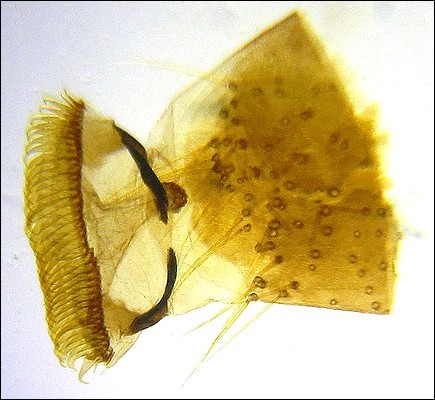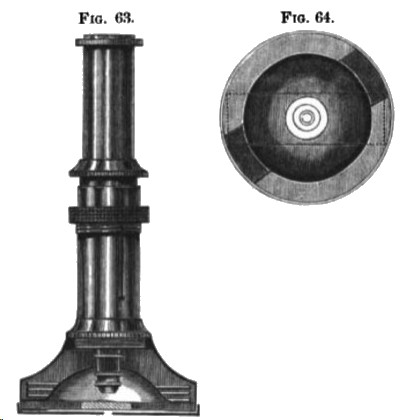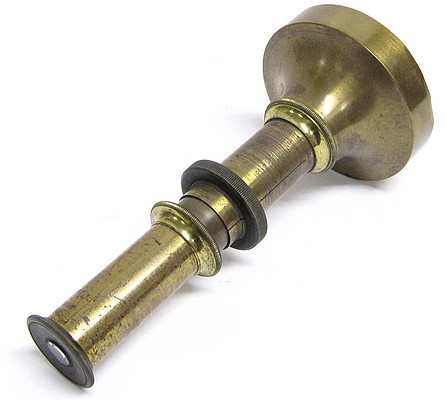
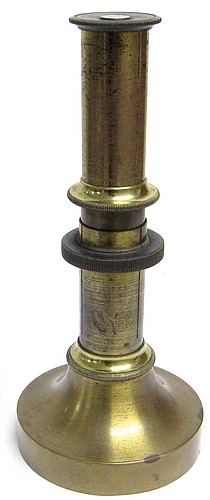
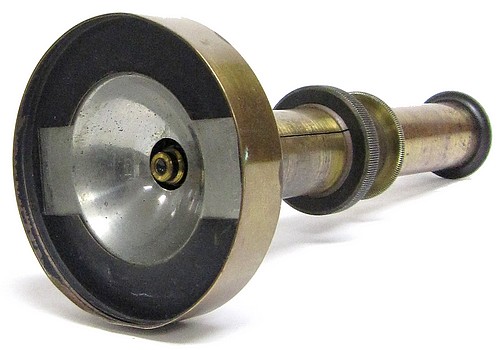
This is an example of a classroom or demonstration microscope. It is constructed of lacquered brass and measures 8 inches long when fully closed. The objective end is 3½ inches in diameter. Focusing is accomplished by push tube. A knurled knob in the middle of the tube serves as a locking mechanism preventing the focusing from being disarranged as the microscope is pasted along from student to student in the classroom. It is equipped with a conventional ocular and an objective, the latter is divisible for power change. The objective end of the instrument incorporates a silvered brass Lieberkuhn reflector, thus allowing the observation of both transparent and opaque objects. This instrument, although unsigned by its maker, is identical to those made by the Berlin instrument maker Paul Waechter as described in The Journal of the Royal Microscopical Society, 1882 as follows:
Waechter's (or Engell's) Class or Demonstrating Microscope. This instrument might readily be mistaken for an ordinary brass candlestick. Its original form is figured by Harting (Harting, P., Das Mikroskop, iii, (1866) pp. 196-7) Figs. 63 and 64 show it as improved by Waechter, the lower part being seen in Fig. 63 in section. The body-tube, carrying eyepiece and objective, slides in an outer "sprung" tube which is attached at its lower end to a conical base, which forms a wide support for the instrument to stand upon when not in actual use. The inside of the base is polished so as to reflect light upon opaque objects. The ends of the slides are held beneath a metal ring at the lower end of the base, as shown in Fig. 64, and they can be removed by turning them round till they coincide with the two openings in the ring. The instrument is held up to the light and focused by sliding the inner tube in the usual way. It can be secured at any given focus if desired by the milled clamp ring near the top of the sprung tube. A cover fits over the base (shown in Fig. 63) and is pierced with a small hole to act as a diaphragm with high powers. The instrument is intended for class demonstration.
A similar microscope was sold by the instrument maker and retailer James W. Queen of Philadelphia as described and illustrated in The Journal or the Royal Microscopical Society, 1885 as follows:
Queen & Co.'s Class Microscope.This (fig. 7) is identical with Waechter's or Engell's instrument already described. We have had one of the original forms in use for some time, and have found it very convenient for exhibiting objects. By daylight it is simply turned to the sky, and there is no difficulty in at once getting the proper illumination. By artificial light the instrument requires somewhat more adjustment, unless there is a large illuminating surface or the Microscope is brought close to the source of light.
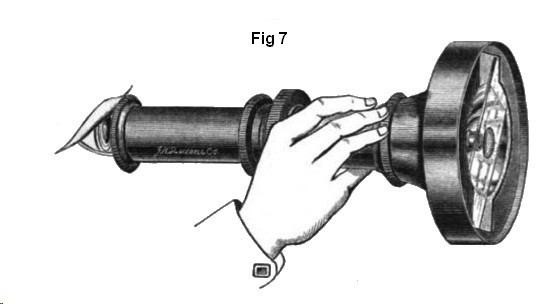
Views through the microscope
Opake object (reflected light)
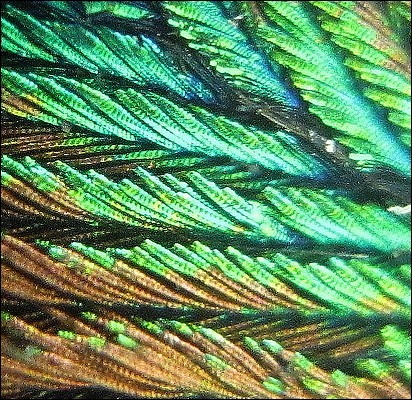
Peacock feather
Transparent object (transmitted light)
